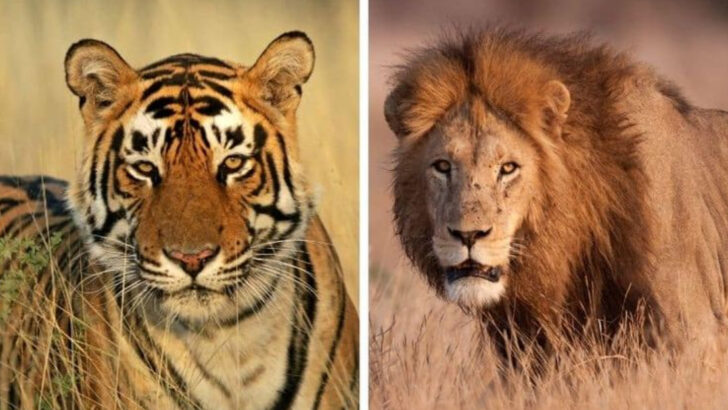Tigers, the majestic big cats, have captured human imagination for centuries. Yet, they are conspicuously absent from the African continent, a place teeming with wildlife.
While Africa serves as home to lions, leopards, and cheetahs, there seems to be no room for tigers. This absence is not just a matter of geography but involves a complex tapestry of ecological, historical, and evolutionary factors.
Furthermore, the ecological niches that tigers might occupy in Africa are filled by other formidable animals.
In this post, we’ll explore the fascinating reasons behind the absence of tigers in Africa and introduce you to the creatures that rule these landscapes instead.
Lions: The Kings of the Savanna
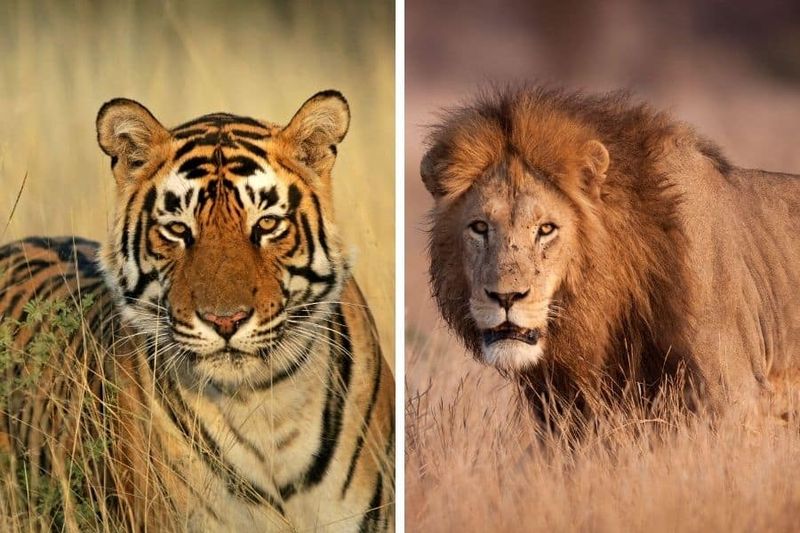
Dubbed the king of the jungle, lions have no interest in dwelling in jungles, but they reign supreme in Africa’s savannas. These social cats live in prides, with females hunting and males defending their territory.
Historically, lions were abundant across Africa, Asia, and Europe, but now mainly reside in Africa. They prefer open grasslands, where their tawny coats blend seamlessly with the dry vegetation.
Courageous and regal, lions symbolize strength and majesty. Their iconic roars can echo across the savanna, a sound both feared and revered. Lions capture the imagination and hold their position as Africa’s top predators.
African Elephants: Gentle Giants

With their immense size and gentle demeanor, African elephants are the true behemoths of the savanna. They traverse vast distances in search of water and food, maintaining a crucial ecological balance. Their intelligent eyes and complex social structures endear them to many.
Elephants play a vital role in shaping their environment, tearing down trees and spreading seeds. Their presence impacts everything from the tiniest insects to the grandest landscapes. Despite threats from poaching, these giants continue to inspire awe and admiration across Africa, symbolizing resilience and wisdom.
Cheetahs: Speed Demons of the Plains

The cheetah’s sleek body and unparalleled speed make it a marvel of evolutionary adaptation. Known as the fastest land animal, cheetahs can reach speeds of up to 60-70 mph in short bursts. Their lean build is perfect for the hunt, where they rely on sight and speed to capture prey.
Cheetahs’ unique adaptations include large nasal passages and lungs for optimal oxygen intake. These solitary hunters prefer open plains where their spotted coats offer perfect camouflage. A symbol of grace and agility, cheetahs are an irreplaceable part of Africa’s rich tapestry.
Leopards: Masters of Stealth
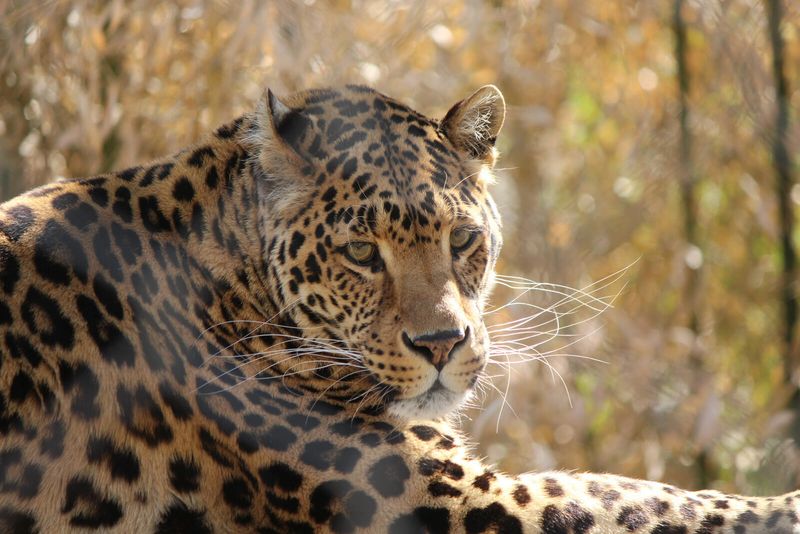
Leopards embody stealth and cunning, lurking in shadows and pouncing with deadly precision. Unlike other big cats, they are solitary creatures, often dragging their prey into trees to avoid scavengers.
Their adaptability enables them to thrive in various environments, from dense forests to arid deserts. Leopards’ powerful limbs and keen sense of smell make them formidable hunters. Although elusive, their enigmatic presence is felt throughout Africa, a testament to their survival skills and ecological importance.
Hyenas: Misunderstood Opportunists

Often misunderstood, hyenas are complex creatures with a unique social hierarchy dominated by females. Though known for scavenging, they are skilled hunters, with clans capable of taking down large prey.
Their bone-crushing jaws and laughter-like calls add to their mystique, but hyenas are more than nature’s cleanup crew. They play a crucial role in maintaining ecological balance by controlling disease through scavenging. Their keen intelligence and adaptability ensure that they thrive in Africa’s challenging environments.
Buffalo: The Unyielding Herds

African buffalo, or cape buffalo, are formidable animals that move in herds and exhibit strong social bonds. Their unpredictable nature and immense strength make them a force to be reckoned with.
Known for their resilience, buffaloes can fend off predators like lions with their herd mentality and sharp horns. They play a pivotal role in their ecosystem, often grazing vast areas and contributing to the landscape’s health. A symbol of unity and determination, buffaloes hold their ground in Africa’s wild terrains.
Zebras: Striped Wonders
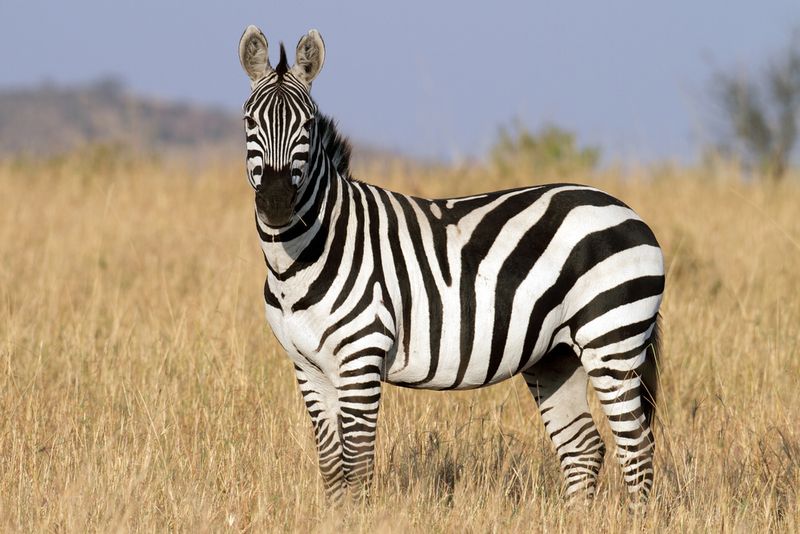
Zebras, with their unmistakable striped pattern, are the fashionistas of the animal kingdom. Their stripes serve as camouflage, confusing predators during a chase. Living in herds, zebras maintain tight social structures, relying on each other for protection.
Their migratory patterns support ecological balance, as they move across vast distances in search of food. Zebras add beauty and intrigue to the African landscape, a testament to nature’s artistry and innovation. Their presence is a reminder of the vibrant life that thrives across the continent.
Rhinoceros: Ancient Behemoths
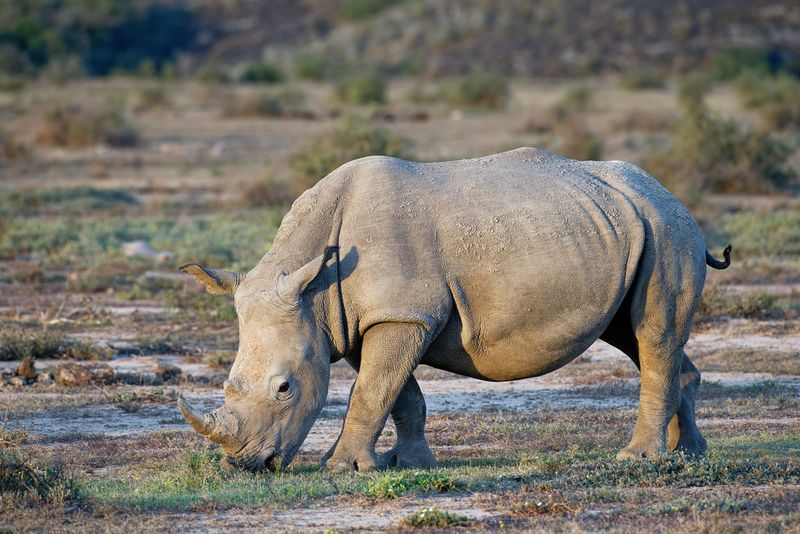
Rhinoceroses, with their thick skin and iconic horns, evoke images of prehistoric times. These solitary giants are mostly peaceful but can become aggressive when threatened.
Rhinos are critical to their environment, shaping landscapes and providing habitat for other species. Despite their size, they face threats from poaching due to the high value of their horns. Conservation efforts strive to protect these magnificent animals, which embody strength and resilience.
Giraffes: Towering Beauties
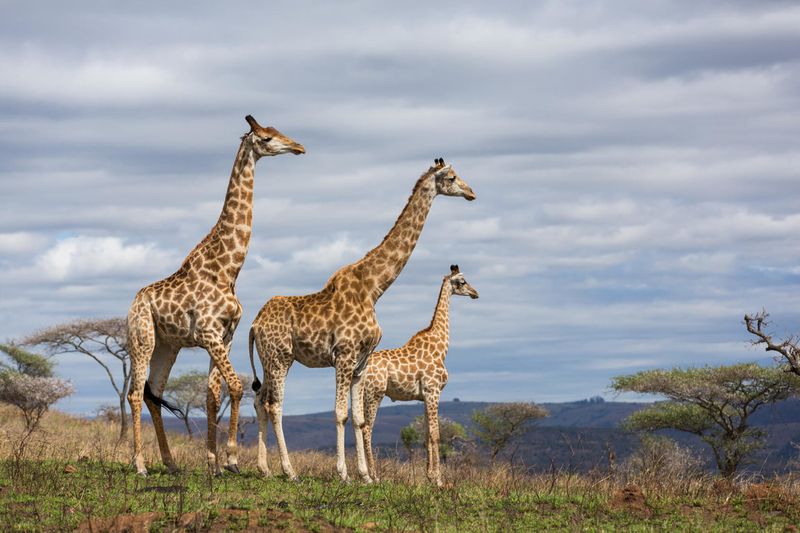
Giraffes, the tallest land animals, offer a unique vista of the African savannas. Their long necks allow them to feed on foliage inaccessible to other herbivores. Gentle and curious, giraffes move with a grace that belies their size.
Their presence supports the ecosystem by controlling tree growth and offering vantage points for bird species. Giraffes’ striking appearances and placid nature make them favorites among wildlife enthusiasts. They stand as symbols of grace and coexistence in the wild.
Hippos: Guardians of the River
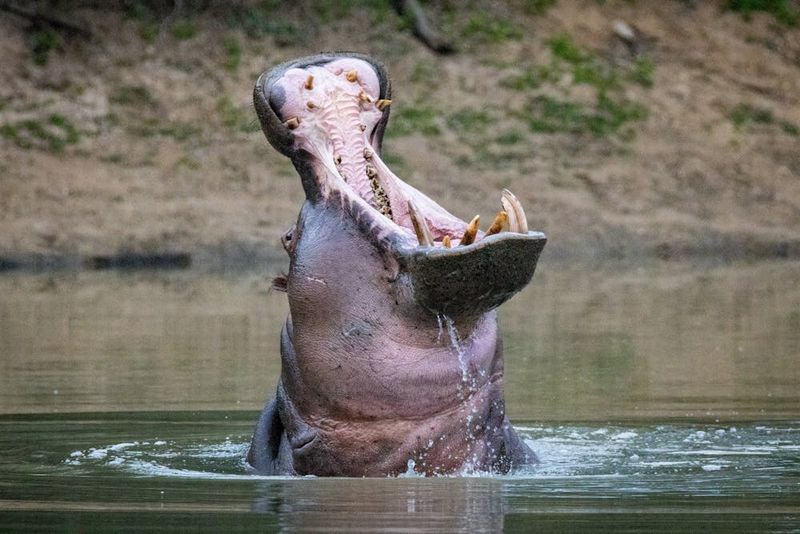
Hippos, often seen wallowing in rivers, are essential to Africa’s aquatic ecosystems. Despite their bulk, they are highly aggressive, capable of defending their territory fiercely.
Their nocturnal grazing habits impact local vegetation, while their dung fosters aquatic life. Hippos’ unique adaptations to water environments make them fascinating creatures. Their playful appearances in water contrast with their powerful presence on land, a duality that captivates observers and maintains ecological harmony.

